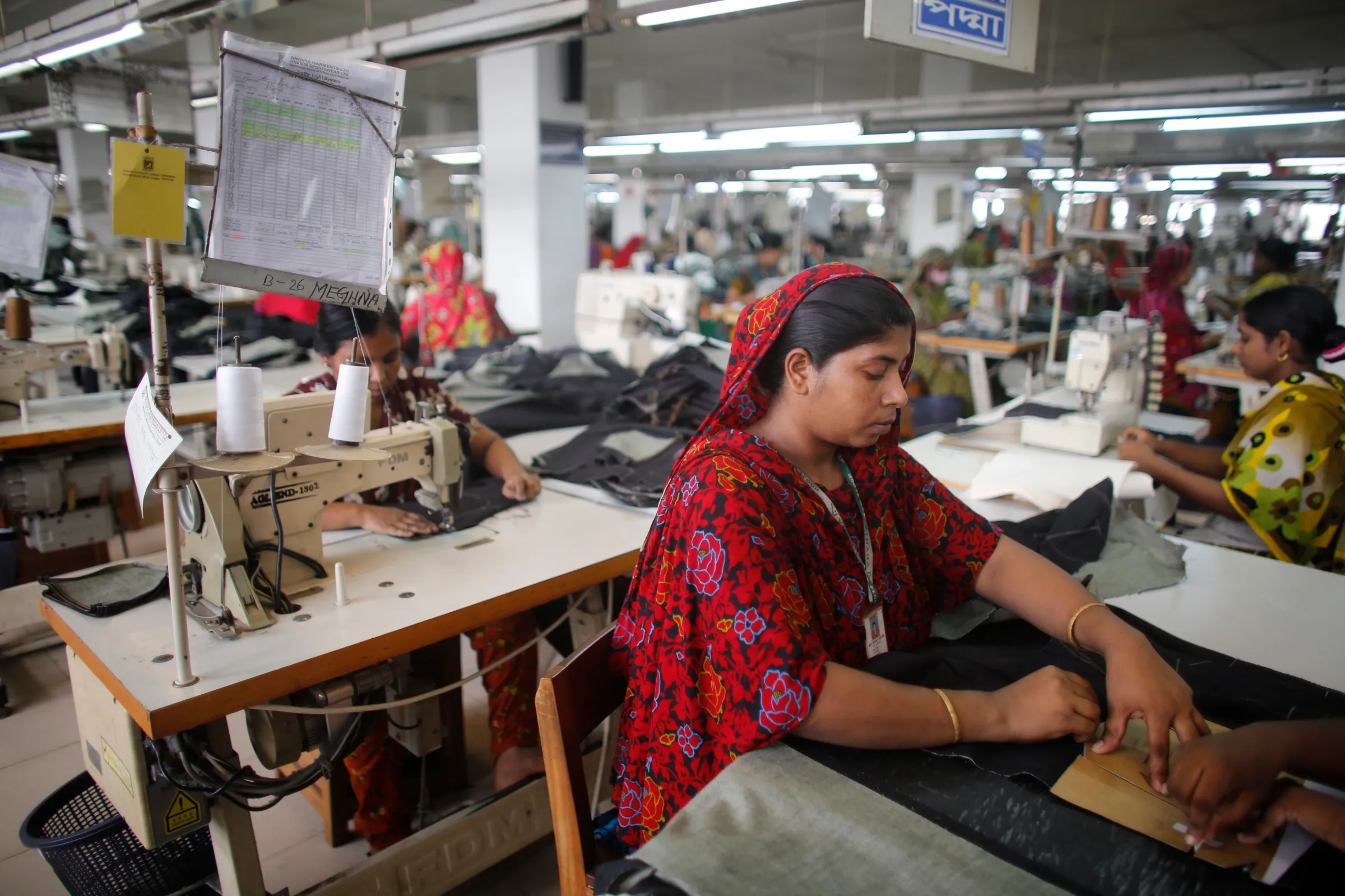Q&A: How can fashion workers adapt to climate change?

A worker works in a factory of Ananta Garments Ltd in Savar June 10, 2014. REUTERS/Andrew Biraj
What’s the context?
Decent, annually revised wages could fill part of the financing gap for fashion workers' climate adaptation.
- Workers facing growing heat and flooding
- Cash in workers' hands key to help them adapt to heat
- Annual pay reviews needed
Jason Judd, executive director of the ILR Global Labor Institute at Cornell University, discusses how workers could be helped to adapt to growing climate hazards.
Growing climate risks such as extreme weather are taking a huge toll on the earnings and health of textile workers in the Global South.
Jason Judd from Cornell University's Global Labor Institute in the United States is a leading expert on the issue. His research sheds light on the damage caused by the climate crisis in countries that make the latest fashions for richer nations.
His team's research suggests countries like Bangladesh, Cambodia, Pakistan and Vietnam could see their fashion earnings fall by 22% by 2030 and lose 1 million jobs without urgent investment in climate adaptation.
In key apparel-producing cities like Dhaka and Hanoi, workers have experienced longer waves of heat stress and more frequent and extreme floods over the last two decades, according to the Cornell University report published in December.
Judd spoke with Context and his interview has been edited for length and clarity.
Why is there limited attention paid to the climate risks workers face?
I think a couple of things are happening. Brands have been slow about adding adaptation to the list of issues they have to deal with.
That's changing, in part because it's difficult for anyone to argue that they should pay attention exclusively to the decarbonisation problem and ignore accelerating heat and intense flooding.
What changes are coming about?
Some brands are beginning to establish guidelines and set standards. Just as heat is accelerating, the setting of standards and the enforcement of the standards should accelerate too.
Suppliers are reluctant because they're not sure if they can afford to make the investment in adaptation and get a return. So they're anxious about having a new unfunded mandate from their buyers.
Given the limited investment in climate adaptation for fashion sector workers, what solutions should come first?
Arguably the most important adaptation technology is cash. It's money in workers' hands that allows them to make choices for their families that reduce the impacts of high heat and flooding.
Workers here in Dhaka told us that to pay their electricity bills, to keep the fan going through the night, they have to sell or pawn their household goods. And their medicine costs go up as high as 10 times in the hottest and most humid months.
How could governments help raise wages to help workers tackle heat?
In Bangladesh, garment wages are reviewed and reset once every five years, which means workers wait a long time for some relief. As prices rise, pressure on workers and their families grows.
Competitors of Bangladesh have decided the system is unsustainable. The most recent example is Cambodia. Ten years ago, they changed their policies. So they now review the minimum wage for garment workers annually.
Would increasing wages put a greater burden on manufacturers and hamper their competitiveness?
We're accustomed to hearing this argument from the employers. In Cambodia 10 years ago, the industry said to the government: 'If you allow these workers to push up the wages using their protests, you will destroy our industry.'
The government at last agreed to change the process and to raise the wages. After the change, wages began to climb in a stepwise manner. And orders grew, revenue grew, and job growth - all up. We can have all three at the same time.
What other measures are needed?
One is through standard setting. The government here could say, for example: 'We will set a standard for the workplace on indoor heat and other measures.'
Another is regulation at the European level, for example, of brands. If EU's Corporate Sustainability Due Diligence Directive survives, then it's the obligation of the buyer to know what's happening. So if they know that there's excessive heat inside the workplace, and if they do nothing to remedy it, then they are liable.
Context is powered by the Thomson Reuters Foundation Newsroom.
Our Standards: Thomson Reuters Trust Principles
Tags
- Extreme weather
- Adaptation
- Workers' rights

















